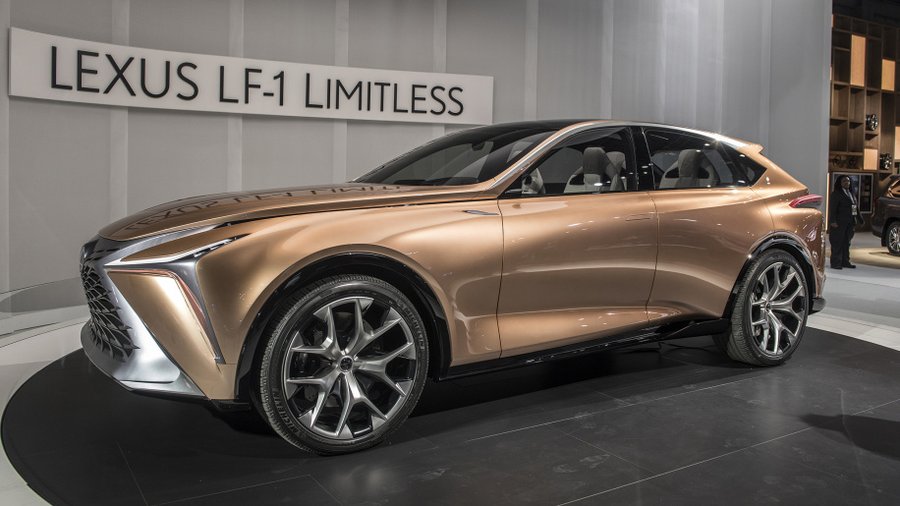Lexus LF-1 Limitless luxury crossover concept is an intergalactic flagship

As most every manufacturer making cars in 2020 will be offering crossovers in varying sizes, Lexus has unveiled its new LF-1 Limitless concept, which has been penned at Toyota's Calty Design Research in Southern California. The vehicle is billed as a "flagship crossover," meaning it slots above the RX and offers more flair than the more truck-like GX and LX models.
If the design of the concept seems sharp, it's at least in part due to the design approach Lexus calls "molten katana" — with the appearance of a Japanese sword in automotive form. The spindle grille that's been the centerpiece of recent Lexus front ends is now a three-dimensional design, which appears to mimic a "Star Wars" ship's shift into hyperspace, eschewing surrounding chrome in favor of LED lighting. The concept detailing includes slightly Tesla–like door handles, which reveal a Lexus logo in the negative space, and a roof spoiler split in the middle. Door mirrors have been shaved off, with the rear view delivered into screens around the instrument cluster, where they resemble motorcycle mirrors.
The feel of hyperspace continues inside, with the perforated door trim allowing lighting through like a starry sky. There are four matching, individual white leather seats under the moonroof, and there's a dedicated light show on offer at the press of the start button, depending of the function mode selected. Most analog switches have been replaced by haptic controls grouped around the driver, or fitted in the steering wheel; all powertrain controls are either in the wheel or in the steering column.
By "Limitless," Lexus appears to refer to the choice of propulsion. Reading between the lines, there doesn't seem to be a set powerplant for the vehicle, as by 2025 all Lexus model lines will be electrified in some fashion, and the production version could be a fuel-cell vehicle, a PHEV, all-electric, or gasoline-powered. There's also a hands-free driver assist level Lexus calls "Chauffeur mode."
In addition, there's a fourth dimension to the concept's navigation system — time. The setup reads traffic information, anticipating possible stops on the way. The idea, according to Lexus, is that the navigation system should feel like a concierge, a virtual assistant instead of just a map screen.
Related News
